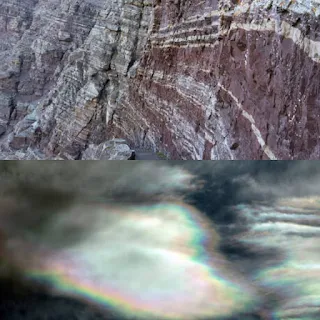A strange type of sedimentary stone has appeared in 11 countries and five different continents around the world both inland and on the coast.
More recently, scientists studying sedimentary geology, with a particular focus on the composition and properties of these sedimentary stones, have found that these rocks are composed of plastic and clastic rocks broken up from pre-existing rocks.
Scientists call these new sedimentary rocks “Plastistones,” and they have been discovered all over the world.
"Plaststones have been found on a global scale, both in coastal and inland regions," the scientists noted.
The process of plastogen formation involves lithification (the process of becoming rock) of plastics, such as polyethylene (PE), polyethylene terephthalate (PET), polypropylene (PP), and other plastic polymers, along with natural or detrital rock fragments.
Human-caused waste has led to the formation of such sedimentary rocks, which are formed when these plastic materials, which often originate from human-generated waste, such as packaging, containers or marine activities, are exposed to combustion, wave action, evaporation or chemical bonding.
Through these procedures, plastic materials combine with existing rock fragments, sediments or minerals and become incorporated into the sedimentary mix.
Fusion occurs through various means, creating a composite rock structure where plastics and natural materials are combined.
The study explained: “Plaststones can form through a variety of means, including campfires, burning plastic waste, wave action, evaporation, or chemical bonding. Plastistones have been shown to alter microbial communities in the surrounding environment and can generate Large amounts of microplastics and nanoplastics.”
The scientists added: “This new type of sedimentary rock provides compelling evidence of how human activities can act as a powerful external geological process that reshapes our planet’s geological record.”
The study was published November 6 in the journal Science Direct.
Rare "rainbow clouds" decorate the Arctic sky for 3 consecutive days
“Amazing” rainbow-colored clouds have been twinkling in the sky above and around the North Pole for more than three days thanks to an unusual cold snap in the upper atmosphere.
Experts say more of these colors could appear over the next few months.
The colorful clouds, known as polar stratospheric clouds (PSC), were spotted floating high in the sky over parts of Norway, Sweden, Finland, Alaska, and south over Scotland.
It began appearing on December 18, and remained visible until December 20, according to Spaceweather.com. Some smaller, less visible clouds were also observed on December 21, but in general they appear to disappear.
Photographer Ramone Chapailaiti captured amazing pictures of the rare phenomenon over a town in southern Norway, which is also called “shell clouds” due to the similarity of its colors and luster to shells.
"The colors are amazing. Clouds were visible in the sky all day, but the colors really exploded just before sunset," Chapailaiti told Spaceweather.com.
These patterns were caused by a long period of unusually cold temperatures in the sky, according to Spaceweather.com.
Polar stratospheric clouds result from small ice crystals that refract or scatter sunlight. This separates the light into individual wavelengths, or colors, and creates an effect similar to the rainbow we see from Earth.
There are two types of multicolor stem cells: the first, made from a mixture of ice crystals and nitric acid, which produces less brilliant colors and is associated with the formation of ozone holes, and the second, which is made of pure ice crystals and produces more vibrant colors. The clouds that recently formed over the North Pole were of the second type.
The sparkling structures form only in the lower stratosphere, 15 to 25 km (9.3 to 15.5 miles) above the Earth's surface.
Usually, clouds do not form at this height in the atmosphere because it is very dry. But at very low temperatures, below minus 85 degrees Celsius (minus 121 degrees Fahrenheit), widely separated water molecules begin to coalesce into tiny ice crystals that clump more closely together in clouds.
Stratospheric temperatures in the Arctic rarely drop below the threshold necessary for these cells to form, so they are typically observed only a few times each year during the winter months. The extreme cold spell that led to the recent appearance of polar stratospheric clouds may have been caused in part by the current El Nino phenomenon, which can affect temperatures around the poles. However, human-caused climate change can also be blamed, and experts say there is a high probability that we will see more of this phenomenon in the Arctic over the next few months, according to Spaceweather.com.






Good
ReplyDeleteGood
ReplyDelete